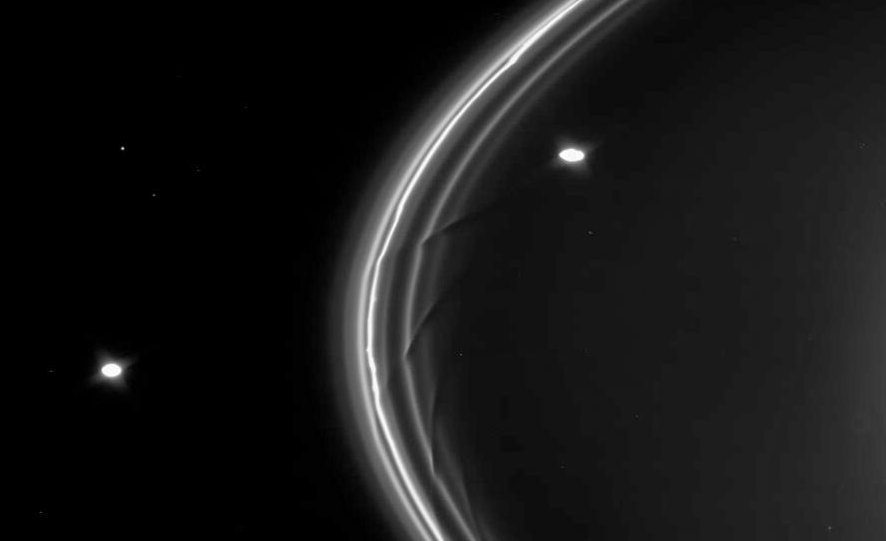Rings. It’s what many senior girls are looking for right now, just as graduation approaches. Spring brings the rings, right? The giant planets, however, sport perhaps the most breathtaking rings of all.
What many won’t notice about rings of giant planets, such as Saturn, are its imperfections.

The darker regions of the rings do not necessarily mean that the rings are made out of darker substances, like the rings of Neptune, which are made out of extremely dark material. The regions in which Saturn’s rings appear dark are actually spaces that have less icy material and particles; that is, less sunlight is reflected in these regions because there is not a comparably large amount of the material present to do so.
Then, where did all that material go? And why does the darkness appear in such uniform, straight patterns?
The answer: shepherds. Yes, objects present in Saturn’s rings (as well as the rings of the other giant planets) actually herd these particles into straight lines around the planet. In order for this event to work, there must be two moons, or satellites, present. One, the outer moon, steals orbital energy from the particles present in the ring around it. This, in essence, “pushes” the particles closer toward the planet – allowing the particles to fall into lower orbits. At the same time, the other, inner moon gives these particles orbital energy. This projects them into the higher orbits, though these orbits are slower than the lower orbits. The push and pull from both moons creates “pressure” on both sides of a section of rings, herding the icy particles into a nice, straight strand.

The image above shows the effects of the moons’ power in the form of ripples. Yet, we still get nice bands (or flocks, if you will) of icy particles, all thanks to these shepherds.
